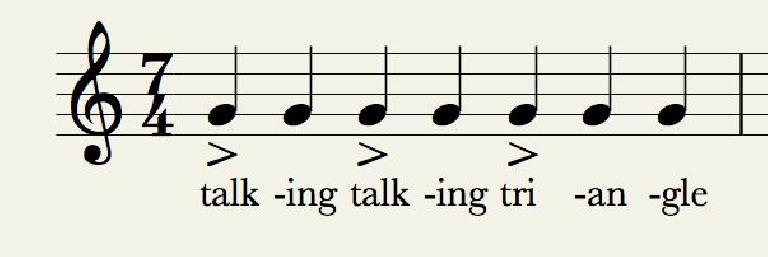每次加载一个新的会话,无论DAW,拍号默认到4/4,在音乐创作中最常用的拍号。对于那些谁需要一个快速的审查,上面记下时间签名是指每小节拍数和底部的数字说明什么样的音符收到一拍,从而确定签名中的所有音符的时间值。
特别是电火花加工品种最多的生产者,自然能在
Common Odd Meters
5/4和7/4
毫无疑问,5/4和7/4是最常用的奇数时间签名。四分音符仍收到两个一拍,但每个人都有独特的感受。这两个不利于我们认为在严格的二倍或三倍的自然倾向,特别是当它涉及到它的节拍在旋律短语或在凹槽中得到强调。在任何时候签字,第一拍得到最注重其次是二级或更弱的重点拍。
其中一个令人难忘的音乐主题5/4是不可能完成的任务主题。现在有不少人认识保罗德斯蒙德
7/4并不像普通的5/4在所有流派,但有一些显着的例子包括“Solsbury山”由彼得·加布里埃尔和Pink Floyd的主要即兴重复段
我最近有一个框架鼓的艺术家和教育家谁使用的短语合作
你也可以试试:
- 123 12 12
- 123 1234
节拍强调的是
5/8,7/8,更
5/8和7/8工作以类似的方式,以5/4和7/4,主要的区别是此消彼长的音符的时间值。在5/8的时间,8日收到照会一拍,四分音符2次等等。如上所述同样的分组仍然适用。这些时间签名往往混杂在一起的其他化合物米。例如,一个作曲家可能集中组成周围6/8或9/8,但扔在一个奇怪的措施,在这里或那里改变的事情或不同的结束词。电台司令已经使用了许多奇怪的时间和交替签名的工作。 7/8部分是用在“偏执的机器人。”
Compound Meter
复合时间或复合仪表包含分成三等份次。化合物计通常被称为三米,最常见的是3/8,6/8,9/8,八分之十二在管弦乐,导体提供脉冲每个节拍较慢组合物,而在快速的,只有第一脉冲每个节拍组被加重。换句话说,在一个快速3/8片,导线将显示每小节一拍,2次的6/8,3次在9/8和4次测量中的12/8。理论上,化合物时也可以被描述为简单的米(4/4或3/4)三胞胎,虽然这会破坏导电图案时速度的变化。无论如何,复合米有一个摆幅简单的米只是不
著名的作品和风格复方仪表包括巴洛克风格的舞蹈,爱尔兰夹具和许多文化等民俗舞蹈往往是在6/8。 “F
Listen, Listen, Listen
要了解这些节奏是如何工作的最好方法是听写在这些时间签名有名的成分。拍手沿算来感受如何旋律,节奏与和谐交织。如果你不舒服跳入奇怪的时间签名或化合物计成分相当,但采用不同的节奏办法听很多古典和流行音乐。您的研究将是一个灵感为你的当前和今后的工作。去探索!






 © 2024 Ask.Audio
A NonLinear Educating Company
© 2024 Ask.Audio
A NonLinear Educating Company
Discussion
Another way of thinking of compound meters - well, roughly half of them - is to realize that any meter where the "numerator", or beats in the measure is a higher number than the pulse, or "denominator", those meters' pulse can be counted equally with the foot or in the head. So 7/4, as in "Money", you can simply tap out 7 quarter notes and then start over at 1 and continue tapping out equal beats beyond. It's an easy way to approach an often misunderstood part of learning rhythm. Shorter meters like 7/8, 5/8 or 7/16, those take more time to understand and teach, obviously!
Want to join the discussion?
Create an account or login to get started!